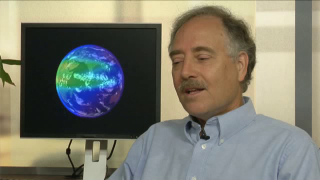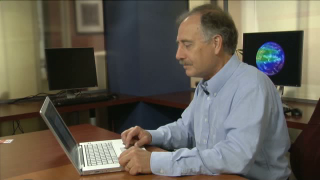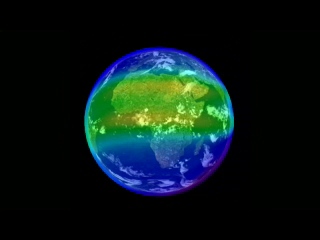Tuesday, September 30, 2008
Mega Parts Storage
Have a lot of parts to store? Here's a great way to store them. More at http://www.vk2zay.net/article.php/66
Friday, September 26, 2008
W4BQF: QRQ or Copying CW over 70 wpm
Don't pass this article up because it talks about super high speed CW. Some of the suggestions apply to all speeds.
More at http://tom.w4bqf.googlepages.com/COPYINGCWOVER70WPM
Quite often I am asked "How can you copy CW at 70 wpm and higher?" Since it's pretty insulting just to answer by saying "Practice, practice, practice", I normally wind up emailing back a synopsis on how I learned to do it. Others have used different methods of achieving QRQ copy by ear.
What I have to say on this subject is only my own personal opinion, which normally does not agree with everyone else!
I really don't believe in the various methods of learning code. I think learning to copy high speed code is much simpler than following someone else's method of learning to copy QRQ. What I am sharing with you is things that I found to work for me.
More at http://tom.w4bqf.googlepages.com/COPYINGCWOVER70WPM
Tuesday, September 23, 2008
New Sunspot Appears
Monday, September 22, 2008
SOLAR ACTIVITY & HF PROPAGATION
Here is a very good article that explains how the Sun works and how it effects radio communications. It's a bit technical, but if you can manage to understand it you'll be a propagation guru and amaze your friends.
Find it at http://www.qrparci.org/mambo/pdf/FDIM81.pdf
Find it at http://www.qrparci.org/mambo/pdf/FDIM81.pdf
Great CW Practice Program for Contesters
"Rufz" is the abbreviation of the German word "Rufzeichen-Hören", which means "Listening to Callsigns". RufzXP is an excellent training software for improving code speed and CW practice, particularly (ultra) high speed memory copying of true amateur radio calls. Focussing on improvement of CW proficiency, it is no contest simulator and does not provide for QRM. It provides additional tools for keeping track of training progress and comparing with other operators via International RufzXP Toplist.
RufzXP is a "must" for every serious high speed telegraphy operator and is an official competition of IARU High Speed Telegraphy Championships.
Find out more at http://www.rufzxp.net/
Earth Space 4-D; Visualizing the Ionosphere using Google Earth

Find out how to use this great propagation tool at http://terra1.spacenvironment.net/~ionops/ES4Dintro.html
DX-IS News Site
The main content here is expected to be about Amateur Radio DX News. You can post:
* DXpedition announcements
* Stories of DXpeditions
To keep up to date and not have to come to this web page, you can use a RSS Reader that will deliver news to you as it comes in. If you use a news reader in conjunction with the WAP capability to get DX Cluster spots via your internet connected cell phone, you will never be without DX News.
More at http://dx-is.com/news/?page_id=2
KB6NU: MI Section Publishes First Youth Newsletter
MI Assistant Section Manager Simon, KC8DYZ, has published the first Youth Radio in Michigan newsletter. Included in this issue are articles by out SM Dale, WA8EFK; Corey, KD8BOQ; and Simon himself.
Another interesting part of the newsletter is a proposal for creating a website just for kids in ham radio. I like this idea a lot. Not only would it be great for kids who are hams in Michigan, but perhaps for kids all over the country.
Sunday, September 21, 2008
The Super J-Pole Antenna(Collinear Design)
This is a copper pipe j-pole with gain. The site also includes a java script to calculate exact dimensions. Find it at http://users.marktwain.net/aschmitz/antennas/jpolecalc.html
Saturday, September 20, 2008
6m Copper Pipe J-pole
Here is a very solid design for a 6m copper pipe J-pole antenna.
http://www.geocities.com/SiliconValley/2775/6mjant01.html
http://www.geocities.com/SiliconValley/2775/6mjant01.html
6m 5/8 Wave Vertical Ground Plane
Specifications 6MU Vertical Antenna
* Total length (including the 50cm mounting boom piece): 3,5m (2,95m effective)
* centre frequency: 51 Mhz
* bandwidth: 2 Mhz
* maximum tunable frequency range: 49...53 MHz+-
* impedance: 50 Ohms
* Gain: 3,6 dBi
* Maximum power using the components described: 20 watt
* NO counterpoise or radials needed if the boom is grounded or the boom length is >= 1,5m
* DC grounded (no static buildup)
* Height: 2,95m
* If needed, it can be disassembled into a very small bundle no longer than the longest element.
Be sure to seal everything up to avoid moisture, corrosion etc...
More at http://users.belgacom.net/hamradio/schemas/on6mu_6meter_verticalantenna.htm#58verticalgroundplane
SolderSmoke #91 STEREO SPECIAL
Be sure to listen to episode 91 of the SolderSmoke podcast:
http://www.soldersmoke.com
September 14, 2008
TOPICS:
Sardinia!
ON5EX's QRSS MEPT leads us back to bike riding
Watching Jupiter, listening for Jupiter
KF6KYI's I-tunes QRSS
Stan, 9H1LO's new grabber
Laptop motion detectors as earthquake detectors
Nuclear fusion in the shack
Philo T. Farnsworth
Building a QRSS freq standard
SPRAT CD
Forget about stocks: SSDRA now selling at $399.89
SolderJokes
QST articles on-line! FB!
Jim Williams and the joy of fixing things
STEREO SPECIAL: Roger Hayward's new binaural DSB project
Antenna woes
MAILBAG:
G0WAT on HOGCON 2008 (21 Sept in Herts.)
AJ8T on Russian rovers with laser reflectors
KA9OOI on language and low pass audio filtering
WB6TNL says NO to rat neurons in QRP gear
KB6QR "beknacked" vice "knackered" ?????
NR5A has a Drake 2A
7J1AWL on the air from Vietnam
KC0PET goes solar
OZ1CJX Bad case of Knack, may need professional help
K8WPR says Knack keeping him away from wild women, bars
AJ8T on CK722 museum
AG5RS works Texas balloon from Dubai (via net)
KI4SGU POW radio parts
N8WQ on schematic drawing program
KF4LMZ has QRSS-itis, finds 10.140 rock in CB rig
WAC Certificate Gets New Look

On Friday, he ARRL Awards Branch unveiled a new design for two IARU award certificates: the Worked All Continents Award (WAC) and the 5 Band Worked All Continents Award (5BWAC). WAC is awarded to amateurs who have confirmed contacts on any band with Africa, Asia, Europe, South America, North America and Oceania, while 5BWAC recognizes hams who have made confirmed contacts with those continents on 10, 15, 20, 40 and 80 meters.
More at http://www.arrl.org/news/stories/2008/09/20/10346/?nc=1
Ethics and Operating Procedures for the Radio Amateur
If there was ever a users manual for amateur radio, this is it. Get it at http://www.rsgb.org/operating/procedures/Eth-operating-EN-RSGB-SITE-july1-2008.pdf
Thursday, September 18, 2008
eHam.net: The St. Louis Key
The St. Louis key is actually a not so much an individual key, but a way of making all sorts of keys. The "key" ingredient ( pardon the pun) is the use of parts salvaged from old Telephone Lever Switches and telephone relays. These parts are long springy levers with very good contact points, sometimes even made of silver.
More at http://www.eham.net/articles/20086
Copy W1AW without a receiver
Bryn N4VM has generously made available hundreds of hours of W1AW code practice mp3 files that you can download and play on your mp3 player or computer at http://www.pcpractice.com/CW/.
They range in speed from 5 to 40 wpm. Text files showing the sent characters are also provided. They are indexed by speed: 5, 7-1/2, 10, 13, 15, 20, 25, 30, 35 and 40 wpm as well by date of transmission. There are also two directories 18 and 18 wpm - both of which contain 18 wpm Morse code practice.
Below the directories of the various speeds are directories with dates. These directories (folders) are different files than the one’s above and are from an earlier period where perhaps Bryn indexed the files by date instead of by speed. So if you run out of the ones indexed by speed, there are entire W1AW sessions recorded here.
KB6NU: Principles of Semiconductor Devices
This online text book appears to be college level and over the heads of some of you, but you still may get something out of it.
Table of Contents
Introduction
Chapter 1: Review of Modern Physics
Chapter 2: Semiconductor Fundamentals
Chapter 3: Metal-Semiconductor Junctions
Chapter 4: p-n Junctions
Chapter 5: Bipolar Transistors
Chapter 6: MOS Capacitors
Chapter 7: MOS Field-Effect-Transistors
Appendix
Wednesday, September 17, 2008
Print your own License certificate
Print your own FCC ham license

An amateur's legal operating authority in the USA comes from the data in the FCC's ULS database (see FCC rules, Part 97.5(a) & 97.7(a)), and not from the paper license that the FCC prints and mails, which is just a legal notification of that data (although the paper license may be required by foreign governments if you travel outside the USA). In fact, the FCC provides a web page for printing a "reference" copy of any FCC license:
* Go to the FCC Universal Licensing System.
* Search for a callsign.
* Select the callsign to display the license data page.
* Click on "Reference Copy".
However, neither the FCC's mailed copy nor (especially) their web page reference copy is very attractive. For a high-resolution (1200 dpi) color license reference copy suitable for printing, enter your callsign below (change the fonts & watermark color if you wish) and click "Generate".
More at http://www.ae7q.net/Generate.php
Tuesday, September 16, 2008
Friday, September 12, 2008
ARRL: Collins Radio Turns 75
Seventy-five years ago a small radio communications company, operating from the owner's basement, officially incorporated in the state of Delaware. From these humble beginnings arose one of the nation's foremost communications and avionics companies -- The Collins Radio Company. Arthur Collins, W0CXX, started building high quality Amateur Radio equipment that from the very beginning was to make the Collins brand legendary among ham radio operators worldwide. The Collins Radio Company was incorporated with $29,000 in capital and eight employees during the depth of the Great Depression. In 1973, Collins was acquired by Rockwell International. In 2001 the company was spun off into what is today Rockwell Collins, Inc with over 19,500 employees worldwide and annual sales of $4.415 billion.
More at http://www.arrl.org/news/features/2008/09/11/10326/
Wednesday, September 10, 2008
Download QST Any QST Article
With just a mouse click or two, ARRL members can now access the online QST magazine archive. This new benefit -- a service of the ARRL Technical Information Service (TIS) -- provides PDF copies of all QST articles from December 1915 through December 2004, enabling members to view and print their favorite article, project or advertisement. For many years, the TIS has provided members with assistance researching ARRL periodicals and publications, as well as providing members and non-members with article reprints for a small fee. Access to the new online digital QST archive is free for ARRL members.
more at http://www.arrl.org/news/stories/2008/09/09/10322/
Tuesday, September 9, 2008
NASA Amateur Radio Special Event
Members of the NASA Glenn Amateur Radio Club will be active daily (2200-0500 GMT) between October 1 and 6 to celebrate the 50th anniversary of the beginning of NASA operations. NA8SA is the amateur radio call sign of the ham club at NASA Glenn Research Center in Cleveland, Ohio. NASA Glenn is the northernmost of the NASA centers. Located at Lewis Field, it is adjacent to and west of the Cleveland, Ohio Hopkins International Airport. NA8SA is one of nine NASA amateur radio clubs
Suggested frequencies are: 14280, 7280, 3880 and 1880 kHz. QSL via: NASA Glenn Amateur Radio Club, Lewis Field, 21000 Brookpark Rd, MS 8-1, Cleveland, OH 44135-3191.
Saturday, September 6, 2008
ARRL is Using Twitter
I have no idea what Twitter is, but ARRL is there. I don't see anything on their Twitter page that isn't on the news page of their big WEB site. I guess I'm to old to get it. See if you can and get it at http://twitter.com/arrl.
Friday, September 5, 2008
Product Discontinuation: Ni-Cd Batteries
On the 26th September 2008, a new EU directive comes into force preventing the importation of Ni-Cd and other batteries into Europe.
Ni-Cd batteries will only be available until our UK stocks are exhausted. alternative types of battery for current equipment has been available for some time, so there should be no problem in finding an subsitute. For older equipment where Ni-Cd was the only type of battery available, replacments may not be available.
Care should be taken to ensure you have the appropriate charger for alternative battery technology that is used for your equipment.
Please dispose of your Ni-Cds safely. Most municipal recycling centres have facilities for the disposal of batteries, and you may also be able to leave the defective batteries with your replacement supplier for disposal.
Should you require any further advice please email us at the address below.
Icom: info@icomuk.co.uk
Is the U.S. next?
The Tick
Word on the street is that the National Institue of Standards and Technology is close to signing a Lease Management Agreement with Clear Channel Communications, Inc. for its flagship Time and Frequency station WWV, Fort Collins, Colorado.
Clear Channel Radio's consultants have demanded some changes to the sound of the station, which broadcasts time of day, standard frequency, and other information 24 hours per day, saying that the old format is "dull and predictable."
Additionally, WWV's traditional modulation level of 50 percent for the steady tones, 50 percent for the BCD time code and 75 percent for the voice announcements was deemed "not loud enough." The station will reformulate itself as "The Tick."
WWV's program director Hickory Zeitgeist says that the station has already added some snappy new announcements to the rotation, which can be heard by clicking the clock.
Hear the new WWV, at "The Tick"
Monday, September 1, 2008
DailyTech: Sun Makes History: First Spotless Month in a Century
Drop in solar activity has potential effect for climate on earth.
The sun has reached a milestone not seen for nearly 100 years: an entire month has passed without a single visible sunspot being noted.
The event is significant as many climatologists now believe solar magnetic activity – which determines the number of sunspots -- is an influencing factor for climate on earth.
According to data from Mount Wilson Observatory, UCLA, more than an entire month has passed without a spot. The last time such an event occurred was June of 1913. Sunspot data has been collected since 1749.
More at http://www.dailytech.com/Sun+Makes+History+First+Spotless+Month+in+a+Century/article12823.htm
WVDXA: A Month Without Sunspots
The sun has reached a milestone not seen for nearly 100 years: an entire month has passed without a single visible sunspot being noted.
The event is significant as many climatologists now believe solar magnetic activity – which determines the number of sunspots -- is an influencing factor for climate on earth.
Subscribe to:
Posts (Atom)












